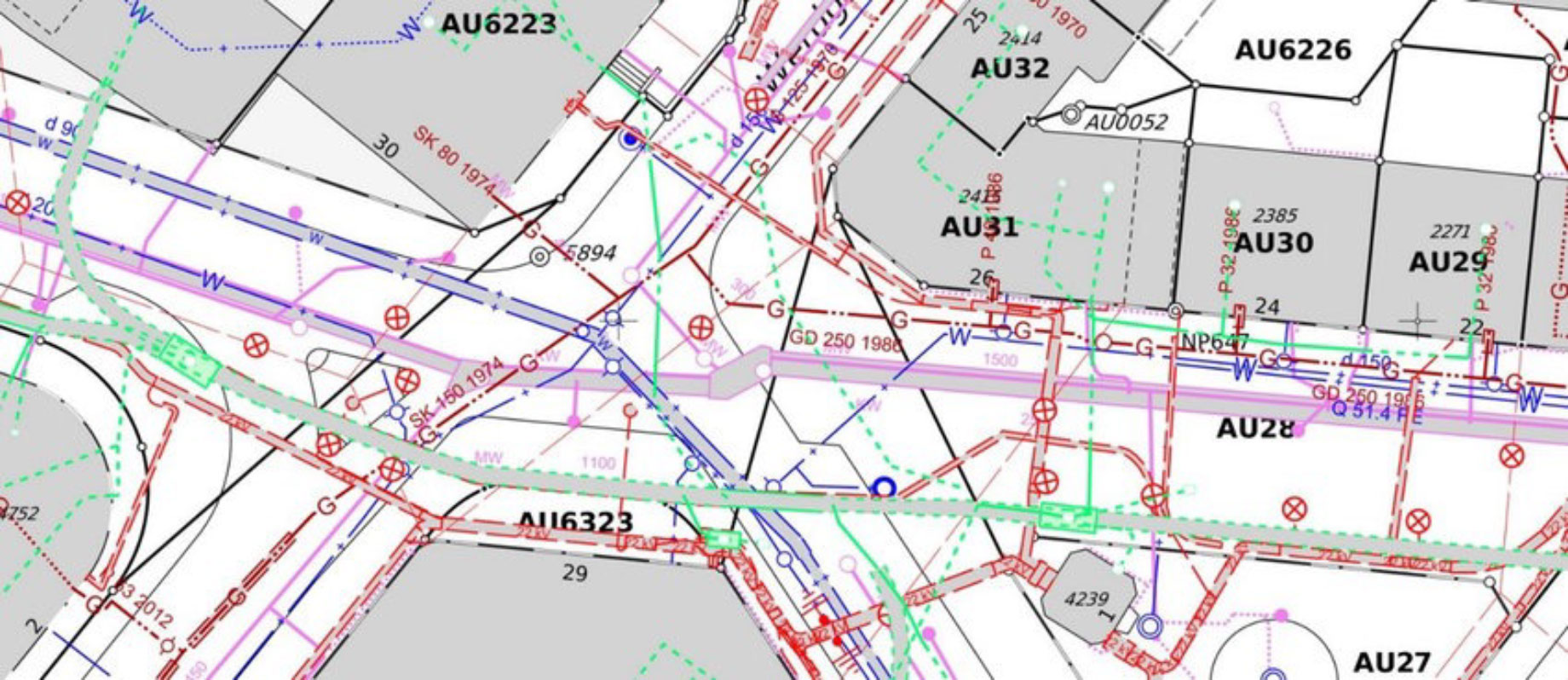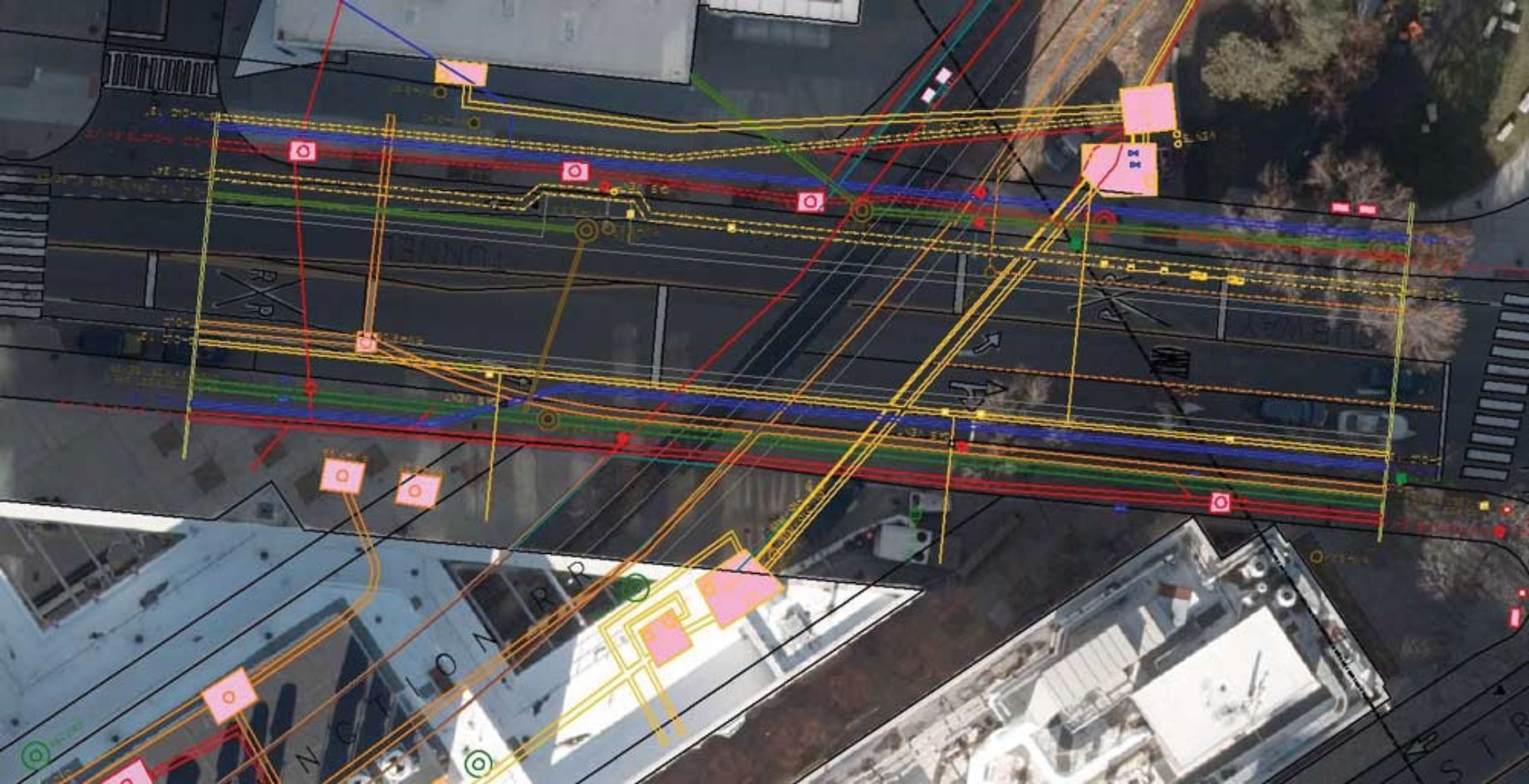
Are you interested in learning how urban redevelopment projects can revitalize cities with minimal disruptions? Utility mapping is the key to achieving this goal. By understanding the existing utility infrastructure, advanced technologies can accurately map out the underground networks of water pipes, gas lines, and electrical cables. This knowledge allows for better planning and design, minimizing disruptions during construction and ensuring a smoother revitalization process.
When it comes to urban redevelopment, it is crucial to have a comprehensive understanding of the existing utility infrastructure. By utilizing advanced technologies for accurate utility mapping, you can ensure that all underground networks are properly identified and accounted for. This information is invaluable in avoiding potential conflicts or damage during construction. With this knowledge at hand, you can streamline the entire construction process by efficiently coordinating with utility providers and contractors. By employing utility mapping techniques, you contribute to the successful revitalization of cities while minimizing disruptions for both residents and businesses alike.
The Importance of Understanding Existing Utility Infrastructure

Understanding the existing utility infrastructure is crucial for successfully revitalizing cities, as it allows for minimal disruptions and ensures a smoother process overall. By having a comprehensive understanding of the current utility systems in place, urban redevelopment projects can be planned more effectively and executed with minimal interruptions to essential services such as water, electricity, and telecommunications. This knowledge enables city planners and developers to make informed decisions about where new structures can be built or how existing infrastructure can be upgraded without causing major disruptions to the daily lives of residents.
Moreover, understanding the existing utility infrastructure helps identify potential conflicts or constraints that may arise during the redevelopment process. For example, if there are multiple underground utility lines running through an area earmarked for redevelopment, knowing their exact locations can prevent accidental damage during construction. Additionally, this knowledge allows for better coordination among different stakeholders involved in the project, such as utility companies and construction teams. By working collaboratively from the outset and considering all aspects of the existing infrastructure, cities can avoid costly delays and minimize inconveniences to both residents and businesses throughout the revitalization process.
Comprehending the existing utility infrastructure plays a vital role in successful urban redevelopment efforts. It enables city planners to minimize disruptions by strategically planning construction activities around essential services while also identifying potential challenges early on. By prioritizing this understanding at every stage of development, cities can revitalize themselves without causing unnecessary inconvenience to their inhabitants.
Advanced Technologies for Accurate Utility Mapping
Utilizing advanced technologies ensures precise and detailed mapping of essential infrastructure, seamlessly integrating with urban redevelopment efforts. These technologies, such as ground-penetrating radar (GPR) and geographic information systems (GIS), provide accurate information about the location and condition of underground utilities. With GPR, electromagnetic waves are sent into the ground and the reflected signals are analyzed to detect subsurface features like pipes and cables. This non-destructive technique helps minimize disruptions during construction by allowing developers to plan around existing utility lines. GIS, on the other hand, uses computer software to create digital maps that can be overlaid with other data sets to facilitate better decision-making. By leveraging these advanced technologies, urban planners can identify potential conflicts or limitations in utility infrastructure before starting redevelopment projects.
To further engage the audience in this topic, here are three key benefits of using advanced technologies for accurate utility mapping:
- Enhanced Safety: Accurate utility mapping reduces the risk of accidental damage to underground infrastructure during construction activities. This ensures a safer working environment for construction crews and minimizes the potential for service disruptions to nearby residents or businesses.
- Efficient Project Planning: Advanced technologies enable efficient project planning by providing comprehensive information about existing utility networks. This allows developers to make informed decisions regarding design modifications or alternate routes to avoid conflicts with utilities, saving time and resources.
- Cost Savings: Accurate utility mapping helps prevent costly mistakes such as hitting an electrical cable or water pipe during excavation. By identifying potential obstacles beforehand, developers can significantly reduce repair costs associated with these accidents, resulting in substantial savings over time.
By incorporating these advanced technologies into urban redevelopment initiatives, cities can revitalize their infrastructure while minimizing disruptions and maximizing efficiency.
Minimizing Disruptions in Urban Redevelopment Projects

To ensure a smooth and uninterrupted transformation of urban landscapes, you must carefully navigate around existing infrastructure, like hidden underground labyrinths waiting to be discovered. Urban redevelopment projects often involve extensive digging and construction work, which can pose significant risks if not handled properly. By minimizing disruptions during these projects, you can avoid unnecessary delays, reduce costs, and ensure the safety of both workers and the surrounding community.
One way to minimize disruptions is through the use of advanced utility mapping technologies. These technologies allow developers to accurately locate underground utilities such as water pipes, gas lines, and electrical cables before starting any construction work. By having a clear understanding of the existing infrastructure beneath the surface, you can plan your redevelopment project accordingly and make informed decisions about where to dig or build. This helps prevent accidental damage to critical utility lines, avoiding costly repairs or service interruptions for nearby residents and businesses.
Another strategy to minimize disruptions is effective communication with all stakeholders involved in the urban redevelopment project. This includes not only your team members but also local authorities, utility companies, and residents in the area. By keeping everyone informed about your plans and timelines for construction activities, you can address any concerns or potential conflicts ahead of time. Open dialogue allows for collaboration in finding alternative solutions that may help mitigate disruptions or reconfigure construction schedules if necessary.
By adopting these strategies for minimizing disruptions in urban redevelopment projects, you can ensure a smoother transition towards revitalizing cities while minimizing inconvenience for both workers and the community at large.
Streamlining the Construction Process with Utility Mapping
By effectively streamlining the construction process, developers can greatly enhance the efficiency and productivity of urban redevelopment projects. One way to achieve this is through utility mapping. By accurately mapping out the existing utilities such as gas lines, water pipes, and electrical cables before starting any construction work, developers can minimize disruptions and delays caused by accidental damage to these essential services. With utility mapping, they can identify potential conflicts or obstacles underground and plan their construction accordingly, avoiding costly mistakes and rework.
Moreover, utility mapping allows for better coordination between different stakeholders involved in the project. By sharing detailed maps with contractors, engineers, and utility providers, everyone can have a clear understanding of where each utility line is located and how it may affect their work. This helps in avoiding conflicts between different teams working simultaneously on different aspects of the project. It also enables efficient scheduling of tasks so that there is minimal downtime due to waiting for utilities to be relocated or repaired.
Streamlining the construction process with utility mapping not only reduces disruptions but also improves overall project efficiency. Developers who invest in accurate utility mapping upfront can save time and money by avoiding costly mistakes during construction. Furthermore, effective coordination between all stakeholders ensures a smooth workflow and timely completion of urban redevelopment projects while minimizing disruptions to residents and businesses in the area.
Contributing to the Successful Revitalization of Cities
You can play a crucial role in the successful transformation of cities by embracing efficient construction practices that enhance productivity and minimize inconveniences. As urban redevelopment projects aim to revitalize cities while minimizing disruptions, your commitment to utility mapping can greatly contribute to this goal. By accurately identifying and mapping underground utilities before starting any construction work, you can avoid costly delays, accidents, and unnecessary disturbances.
Utility mapping provides essential information about the location, depth, and type of existing infrastructure such as gas lines, water pipes, electrical cables, and telecommunications networks. Armed with this knowledge, you can plan construction projects more effectively and make informed decisions about where to dig or build. This not only improves project efficiency but also reduces the risk of accidentally damaging important utilities during the construction process. By taking these proactive measures, you are actively contributing to the successful utility marking symbols of cities by ensuring that development occurs smoothly with minimal disruptions for residents and businesses alike.
Embracing efficient construction practices through utility mapping is crucial for successfully revitalizing cities. Your commitment to accurate mapping and careful planning can enhance productivity while minimizing inconveniences caused by unexpected utility damage or delays. By playing a proactive role in urban redevelopment projects, you are helping create vibrant cities that thrive without unnecessary interruptions or disruptions.
Conclusion
Understanding the existing utility infrastructure is crucial for successful urban redevelopment projects. By utilizing advanced technologies for accurate utility mapping, cities can minimize disruptions and streamline the construction process. This not only saves time and resources but also contributes to the overall revitalization of cities.
By recognizing the importance of utility mapping, urban planners and developers can ensure that their projects are carried out with minimal disruptions to residents and businesses. With a comprehensive understanding of the underground utility network, they can plan their redevelopment strategies more effectively, avoiding costly setbacks and delays. Additionally, by using advanced technologies such as ground-penetrating radar and GIS data analysis, accurate utility mapping becomes more accessible and efficient.
Streamlining the construction process through utility mapping not only benefits the developers but also improves the quality of life for city dwellers. Reduced disruptions mean less inconvenience for residents who may have to navigate road closures or endure temporary service interruptions. Businesses in these areas also benefit from uninterrupted operations during construction, leading to increased economic growth. Ultimately, by prioritizing accurate utility mapping in urban redevelopment projects, cities can successfully revitalize themselves while minimizing disruptions and ensuring a smooth transition into a brighter future.